Kasserine Pass Group Build: Ltn Heinz-Edgar Berres, JG 77
JG 77 in North Africa:
From the entry of the Afrika Korps into combat in North Africa in May 1941 until August 1942, the only assigned fighter unit was JG 27. III/JG 53 moved to North Africa to reinforce the Afrika Geschwader at the end of July. In mid-October, in the face of increased RAF air opposition leading up to the Battle of El Alamein, I/JG 27 and I/JG 77 moved from Sicily where they had been engaged in the final campaign against Malta, while II/JG 53 and the Jabos of I/Sch.G 2 also flew in for reinforcement. In late October, a decision was made that war-weary JG 27 would be entirely replaced by JG 77, which was still operating II and III Gruppen on the southern Eastern Front under the leadership of famed experte Joachim Muncheberg. III/JG 77 duly arrived in North Africa on October 29, followed by II/JG 77 in early December. JG 27 departed North Africa for Italy in late November.
The Allied landings in French North Africa forced the Germans to face a new enemy and fight on two fronts. I and III/JG 53 crossed from Sicily to Tunisia the week after the Operation Torch landings. In January II/JG 51 arrived, followed by II.JG 2 which introduced the FW-190 to the theater.
Initially, the German pilots found the USAAF pilots overconfident and inexperienced. P-38 pilots were willing to try and dogfight the more maneuverable German fighters and their losses were such that the remaining two P-38 groups in the Eighth Air Force were sent as reinforcements, with the entire 82nd Fighter Group arriving in December; in January, the 78th FG was stripped of all pilots other than flight and squadron leaders and all P-38s, which were sent to North Africa to make up losses. Eventually, the overwhelming numerical superiority of the USAAF overcame German quality, as the Germans were unable to make up losses as the Americans could.
Joachim Muncheberg was killed in combat on March 23, 1943 when he collided with the Spitfire Vb of the 31st FG that would have been his 135th victory. He was replaced by Johannes “Macki” Steinhoff, a 150-victory experte who had commanded II/JG 52 in Russia. By May, the much-reduced three Gruppen of JG 77 were operating from the Cape Bon peninsula and could only offer slight resistance to the overwhelming USAAF and RAF units that opposed them. On May 7, 1943, Tunis and Bizerte fell and the last of the Jagdflieger fled to Sicily.
Leutnant Heinz-Edgar Berres:
Heinz-Edgar Berres is one of the lesser-known German experte, but a score of "only" 52 sets him above every allied ace in the RAF and USAAF. After joining the Luftwaffe in late 1939 and undergoing pre-war quality flight training, he was posted to 3.(J)./Lehrgeschwader 2 in the summer of 1941. The unit joined Operation Barbarossa in August and on November 29, 1941, he scored his first victory when he shot down a Tupolev SB-2. On 29 December 1941, he claimed his second victory, a Polikarpov I-15. On February 28, 1942 he claimed another I-15 and a Polikarpov R-5 on March 9, 1942. On March 24 he claimed an I-16.
Berres' Staffel became 3 staffel of 1/JG 77 when I(J)./Lehrgeschwader 2 was transferred to that unit on January 6, 1942. Berres adopted the insignia of I(J)/Lehrgeschwader 2 as his personal insignia on his airplanes. I/JG 77 was transferred to Romania in late March and on June 12, 1942, 13 B-24D Liberators of the "Halverson project" (HALPRO) attacked Ploesti. Berres' staffel was scrambled to intercept and he claimed one B-24D shot down.
At the end of June, I/JG 77 was transferred to Sicily for operations over Malta and Berres scored his eighth victory, a Spitfire of 603 Squadron. By the end of October, when the Luftwaffe campaign against Malta concluded, Berres had been victorious over 11 Spitfires. He was made Gruppe Adjutant at the conclusion of the campaign in recognition of his success.
I/JG 77 transferred to North Africa at the end of October. On November I, Berres claimed a Curtiss P-40 Kittyhawk over Bir-el-Abd, and other on November 3 northwest of Quotaifiya, and another over Marble Arch on November 11.On December 7, he shot down a Martin Baltimore from 60 Squadron SAAF west of El Haseiat. Berres' 25th and last victory of 1942 was a Spitfire over El Agheila on December 14.
In January 1943, I/JG 77 moved into southern Tunisia to confront the Americans. Berres claimed a US-flown Spitfire on January 8 and a B-25 Mitchell on January 14. He claimed two P-38s on February 4, 1943, then claimed two Lockheed P-38 Lightnings and a B-25 four days later, ending the month with claims for two P-40s on February 26. The Battle of the Mareth Line began in March and on March 7, Berres engaged Spitfires over the front line and claimed one shot down for his 33rd victory.
In March, Berres was placed in command of 1st Staffel. On March 10, he was one of the JG-77 pilots escorting 15 Ju 87s from StG 3. Intercepted by RAF Spitfires, the Stuka leader, Leutnant Heinz Üldemann was shot down and killed, but JG 77 claimed nine Spitfires destroyed, one of which was Berres' 34th victory. On March 24, the day after the loss of Joachim Müncheberg, Berres led 13 Bf 109s of I./JG 77 that intercepted 18 B-25 Mitchells of the 321st Bombardment Group, escorted by P-40s of the 57th and 58th Fighter Groups. Berres claimed a P-40, a B-25, and another P-40 in 11 minutes for his 37th, 38th and 39th victories. After claiming his 40th victory over a P-40 on April 2, Berres was shot down near Oudref but escaped back to German lines. He claimed his 44th victory over Cap Bon on May 5 before I/JG 77 escaped to Sicily.
Heinz-Edgar Berres was killed in combat with RAF Spitfires led by Wing Commander Colin Gray on July 25, 1943, when JG 77's 12 Bf-109s escorting 10 Ju-52s to Sicily were intercepted over the Straits of Messina. Four Bf-109s were shot down, with three of the pilots surviving. Berres Bf-109G-6 caught fire and exploded when it hit the water. He was posthumously promoted to Hauptmann and awarded the Knight's Cross of the Iron Cross in recognition of his 52 victories.
The model is an Eduard Bf-109G-4, and represents the airplane Berres was re-equipped with in January 1943. It has a fresh coat of field-applied RLM 79 with RLM 80 blotches. The winter weather (cold rain) was such in January and February that it didn't sun-bleach. The markings were pieced together from decals in the dungeon. Thank goodness I never threw away the Fujimi Bf-109 sheet, which has staffel, gruppe and geschwader insignia for every unit that flew the 109. 40 years old and the I(J)/Lehrgeschwader 2 ornate "L" superimposed over a map of Britain still worked.
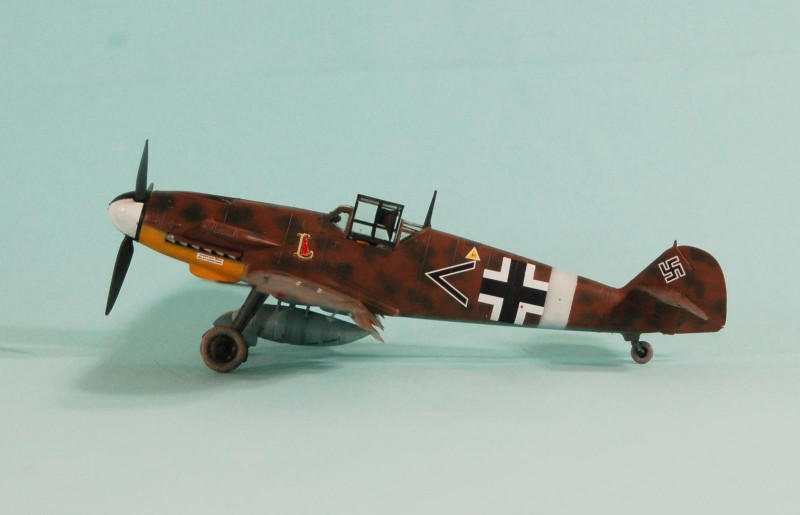
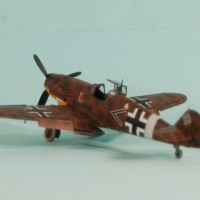
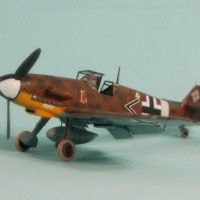
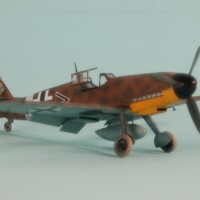
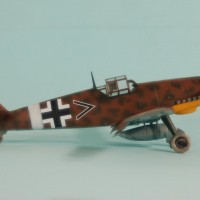
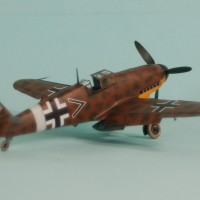
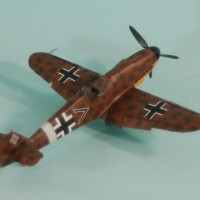


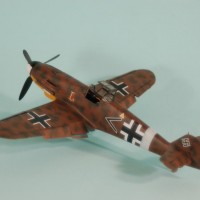
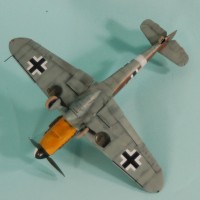


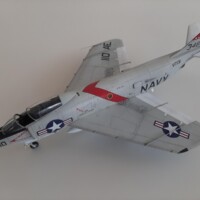
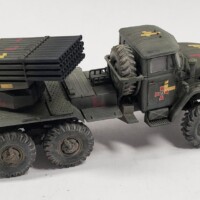
SUPERB! Thanks again for the very interesting and informative history lesson. As a history teacher I appreciate these articles Tom! This is what attracted me to our hobby many years ago. Being able to research the history of the aircraft, pilot and conflict and then build a model of that aircraft is what makes this hobby so special! Your model looks great as always!
Models introduced me to history and now I write it.
...and very GOOD at it!
There are some entries posted here on iModeler that have that distinctive 'look' about 'em whereas I'm able to quite easily ascertain whose build it is just from seeing the headline photo. Yours is usually one of 'em. The presentation, the [now] clarity of the pictures and, as always, the addition of the comprehensive & informative narrative. This was no exception. Yet another fine job...kudos to your talent(s), my friend. Keep up the good work.
Thanks. Kudos to the VA for giving me the eyes I had at 40. 🙂
Yeah...now if I (we) could only regain other aspects of physiology we enjoyed at 40 I'd be a happy camper. 🙁
(Ed McMahon voice): You are correct, Sir! 🙂
Tom, thanks very much for posting pictures and the historical background of your build!
Once again, your story illustrates how important the Tunisian "Proving ground" was for the Allied campaign in Europe, the major ground action having started right there. I'm no professional historian, but have always been a fan of historical background to any model built. To me it's one of these aspects that attracted me to this great hobby. Living here near the "Flanders fields" of WWII, I am confronted almost every day with the importance of teaching today's youngsters about the horrors of the past so that they will hopefully never be repeated!
Once again congrats for this fantastic job: I very much liked the paint scheme of a non-sun-bleached 109!
That must be amazing, to be there. I was just reading that 100 people a year along the old Western Front are still killed running across the unexploded ordnance of a century before. And yes, North Africa was "basic training" to the American units that went on to win the war. "An Army At Dawn" is a good book on the subject.
Yes, the most intriguing relic in the area is the Caterpillar crater, found just due SouthWest of the Hill 60 memorial: https://en.wikipedia.org/wiki/Hill60(Ypres)
Today, you can sit by its side and read a book there as it is an oasis of silence. Quite a contrast with its violent genesis over 100 years ago... The Willow tree on the right seems to mourn those who fell in the mines war of 1917.
1 attached image. Click to enlarge.
No words. amazing.
WOW! Another fantastic looking 109. Love it.
Nice work and narrative.
Another nice build and great narrative. Glad I also saved that Fujimi 109 decal sheet after the build a few years ago. A lot of hard to find markings. All it takes is Micro scale liquid decal film and patience.
There's a half-built Fujimi 109 kit with the full untouched decal sheet (probably 1/3 the age of my sheet) sitting at the LHS for a price that makes the decal sheet affordable. Next week. 🙂
As usual, Tom you've relayed another interesting small chapter of history to those of us who appreciate the finer points of the "story." While the equipment, times, places and tactics are important, it's the people who MAKE history. Your narratives always put a "face" on some of the most influential pieces of equipment used in these conflicts.
Great looking "Gustav!" The paint scheme preserved by the lack of sun is a great look to an iconic aircraft.
another great model and post! Love those deep, rich colors on this scheme.